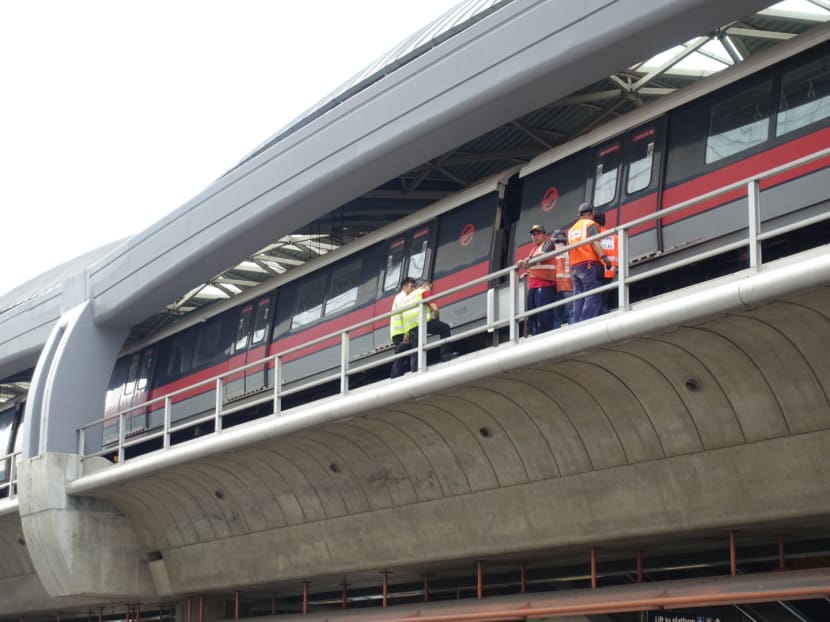In full: LTA and SMRT's explanation of the chain of events behind the Joo Koon collision
In a joint statement on Tuesday (Nov 21), the Land Transport Authority (LTA) and SMRT outlined how the disabling of two "protective bubbles" led to a collision of two trains at Joo Koon station on Nov 15. This is their explanation of the chain of events leading up to the collision:
In a joint statement on Tuesday (Nov 21), the Land Transport Authority (LTA) and SMRT outlined how the disabling oftwo "protective bubbles" led to a collision of two trains at Joo Koon station on Nov 15. This is their explanation of the chain of events leading up to the collision:
Investigation findings on train collision at Joo Koon MRT station
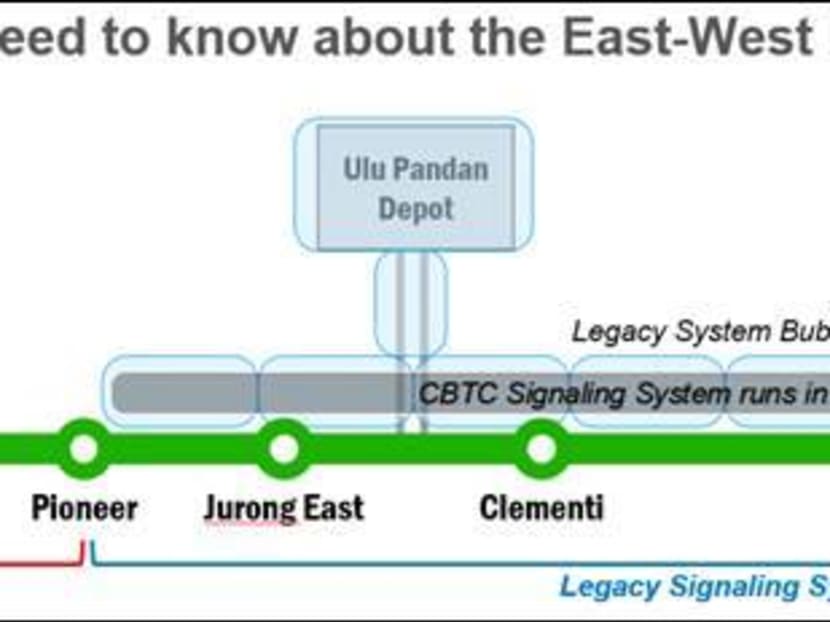
The Land Transport Authority (LTA), operator SMRT and signalling system provider Thales have ascertained that the train collision on 15 November 2017 was caused by an unexpected disabling of a protective feature on the train that was hit, when it earlier passed by a trackside device at Clementi, which had yet to be modified for compatibility with the Communications-Based Train Control (CBTC) system.
When the train was travelling eastwards from Ulu Pandan Depot to Pasir Ris MRT station and then westwards from Pasir Ris MRT station to Pioneer MRT station, it was controlled by the old signalling system with the new CBTC system in passive mode.
The CBTC system took over active control once the train entered the CBTC-controlled area west of Pioneer MRT station.
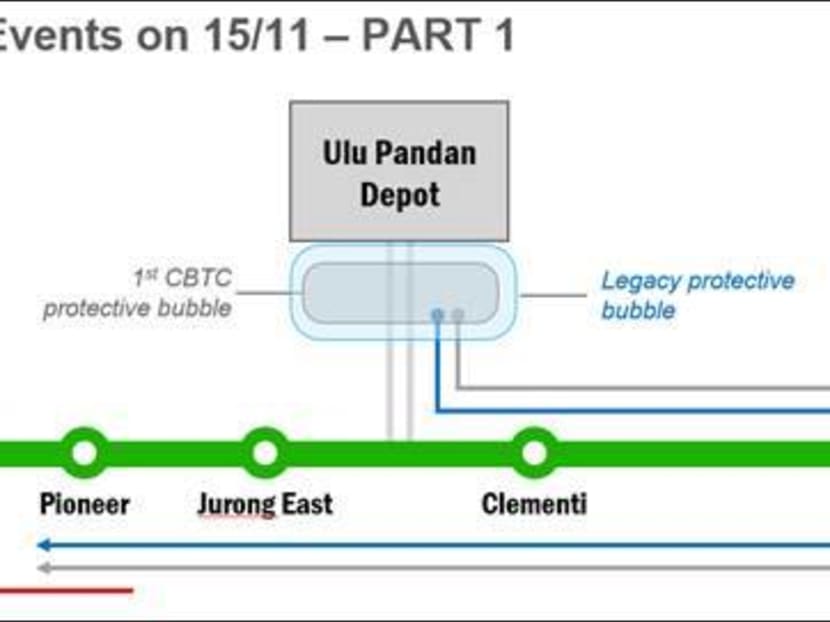
Investigation findings indicate that on 15 November, an abnormal condition on a train-borne CBTC signalling equipment disabled a feature designed to apply a protective "bubble" around the affected train to ensure safe distances between trains.
When such an abnormal condition occurs, the CBTC system is designed to immediately apply a second protective bubble (known as a "Non-Communicating Obstruction (NCO)"), to replace the first protective bubble.
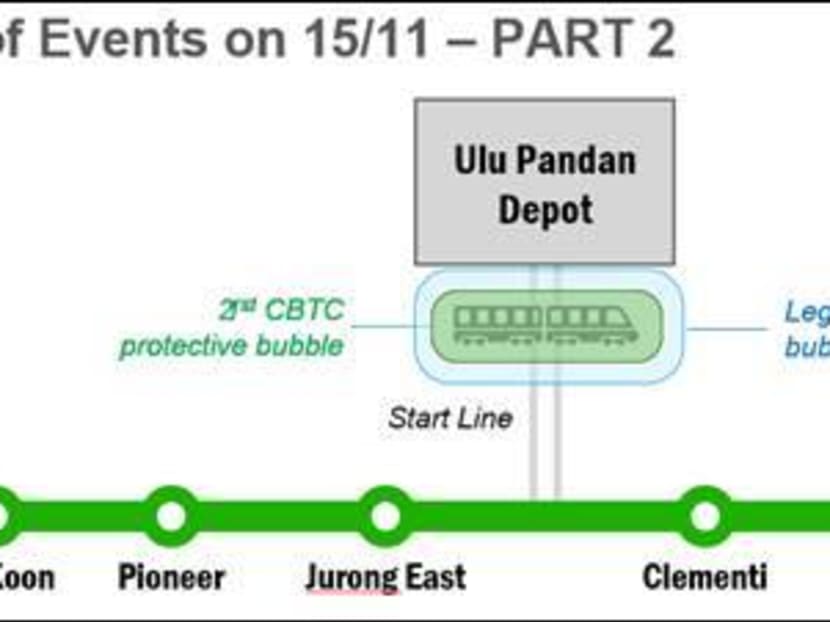
However, this second bubble was unexpectedly disabled when this train passed by a trackside device at Clementi which had yet to be modified for compatibility with the CBTC system.
This did not affect the safe operation of the train as it continued to travel under control of the old signalling system along the EWL, eastwards towards Pasir Ris MRT station and then westward to Pioneer MRT station.

When the train arrived at Pioneer MRT station where it transitioned to the new CBTC system on the TWE, the train captain correctly detected the abnormal condition on the train-borne CBTC signalling equipment and reported it to the Operations Control Centre (OCC).
The OCC then directed the train towards the next station, Joo Koon MRT station to alight passengers before withdrawing the train from passenger service. By design, the train was no longer allowed to move in Automatic Mode after the abnormal condition had been detected.
As such, the train moved towards Joo Koon MRT station in Restricted Manual mode with a system-imposed speed limit of 18 kilometres per hour. The same speed limit was automatically imposed on the second train for safety reasons.
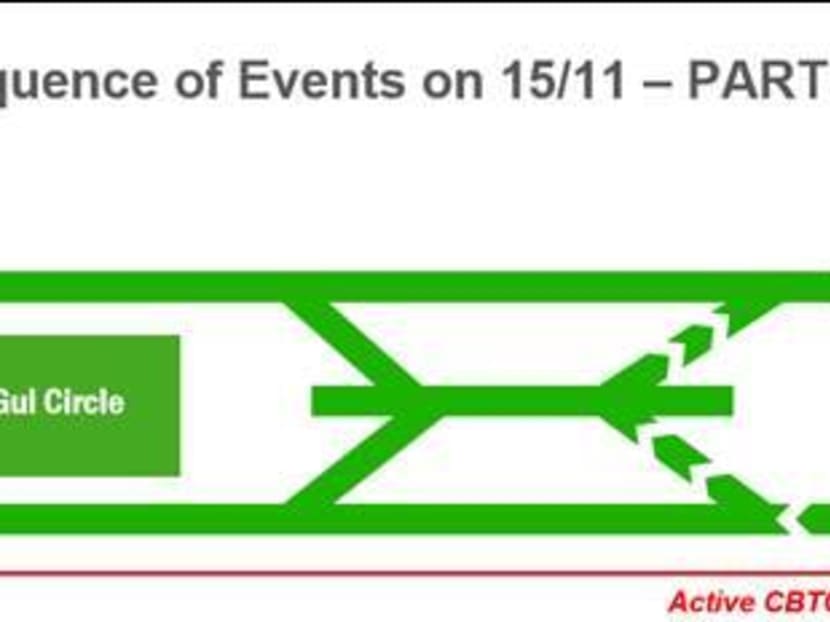
When the first train stopped at Joo Koon MRT station and the platform screen doors were manually opened, the "closed track" protection was automatically activated to prevent other trains from entering or leaving the platform. Data logs have confirmed that the second train stopped about 36 metres behind the first train.
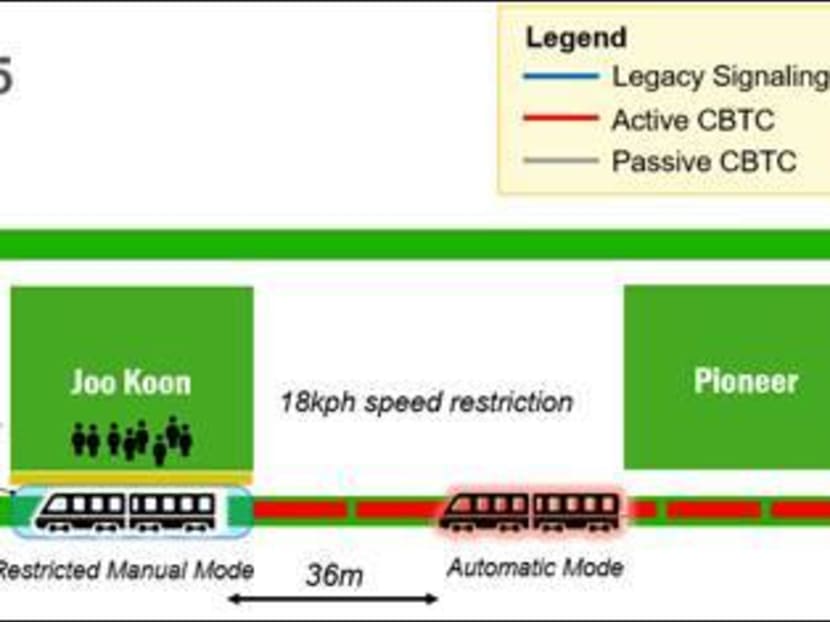
Once the platform screen doors were closed, the "closed track" protection around the platform was automatically lifted to allow the first train to leave the station. At this point, the second train started to move forward automatically as it could not sense any protective bubbles around the first train. This resulted in the collision at 8.20am.
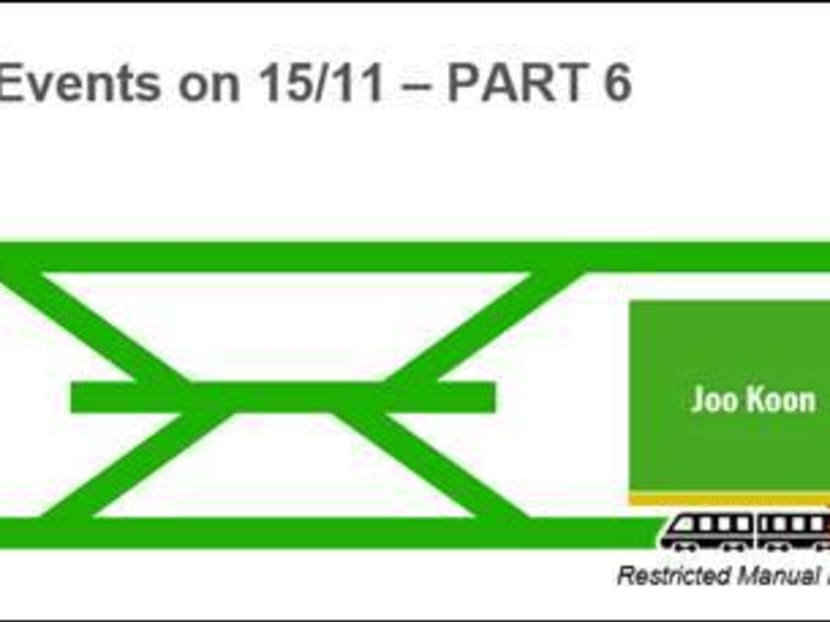
Since 20 November 2017, the signalling systems of the TWE have been separated from the rest of the EWL to reduce the complications of operating two different signalling systems concurrently on an extended line.
This separation will continue until the EWL re-signalling works are completed next year, when the entire EWL, including TWE, can be operated on the new CBTC signalling system.
Thales has also given its assurance that the CBTC signalling systems used on the North-South Line (NSL) and TWE are safe and robust. Thales is also confident that the re-signalling works for the NSL is on track to be completed by next month.
Graphics: LTA

